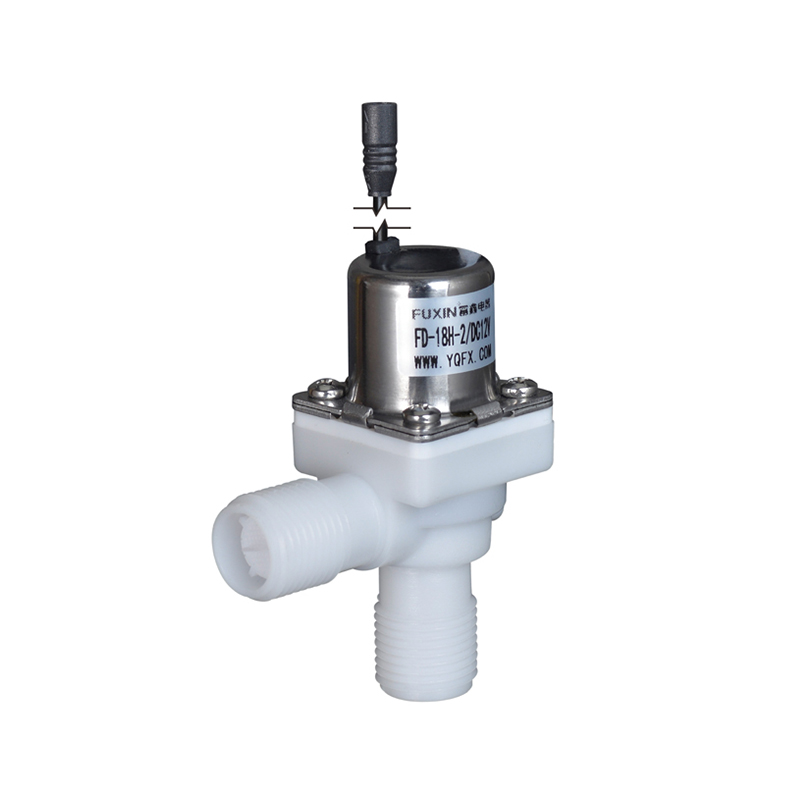In recent years, the plumbing industry has seen significant advancements, particularly in the integration of smart technology into everyday fixtures. One of the standout innovations is the Brass Latching Sensor Faucet Water Solenoid Valve, a device that has revolutionized the way water flow is controlled in faucets, especially in commercial and public settings.
The Brass Latching Sensor Faucet Water Solenoid Valve is a specialized component used in touchless faucets. This valve plays a crucial role in regulating water flow by responding to signals from a sensor. When a user places their hands near the sensor, it sends an electrical signal to the solenoid valve, prompting it to open and allow water to flow. Once the hands are removed, the sensor triggers the valve to close, stopping the water flow. The use of brass in these valves ensures durability and resistance to corrosion, making them ideal for high-use environments.
The adoption of Brass Latching Sensor Faucet Water Solenoid Valves in sensor faucets has surged due to several factors. Hygiene concerns, particularly in the wake of global health crises, have led to a heightened demand for touchless solutions. Sensor faucets eliminate the need for physical contact, thereby reducing the risk of spreading germs. Additionally, the efficiency of these valves in controlling water flow makes them an eco-friendly option, helping to conserve water and reduce utility costs.
The Brass Latching Sensor Faucet Water Solenoid Valve represents a leap forward in valve technology. Traditional solenoid valves require a continuous electrical current to remain open. In contrast, latching solenoid valves use a brief pulse of electricity to change state, meaning they only consume power when switching between open and closed positions. This design not only conserves energy but also extends the lifespan of the valve, as it reduces wear and tear on the components.
The primary application of the Brass Latching Sensor Faucet Water Solenoid Valve is in public and commercial restrooms, where high traffic demands durable and reliable fixtures. However, their use is expanding into residential settings, particularly in homes that prioritize sustainability and hygiene.
One of the key benefits of using a Brass Latching Sensor Faucet Water Solenoid Valve is water conservation. These valves are designed to minimize water wastage by delivering water only when needed and stopping immediately when not in use. This feature is especially valuable in drought-prone areas or regions with strict water usage regulations.
While the advantages of Brass Latching Sensor Faucet Water Solenoid Valves are numerous, there are also challenges to consider. The initial cost of installing sensor faucets equipped with these valves can be higher compared to traditional faucets. Additionally, they require a power source, which can be a limitation in some installations. However, the long-term savings in water and maintenance costs often outweigh the initial investment.
Another consideration is the maintenance of the sensor systems. Although Brass Latching Sensor Faucet Water Solenoid Valves are durable, the sensors themselves can sometimes fail due to battery depletion or technical issues. Regular maintenance and prompt replacement of faulty parts are essential to ensure the smooth operation of these systems.
The future of Brass Latching Sensor Faucet Water Solenoid Valves looks promising, with ongoing research and development focused on enhancing their functionality and efficiency. Innovations such as integrating smart sensors with Internet of Things (IoT) capabilities could allow for remote monitoring and control, further improving water management and conservation efforts.
As environmental concerns continue to grow, the adoption of water-saving technologies like the Brass Latching Sensor Faucet Water Solenoid Valve is likely to increase. This trend aligns with global efforts to promote sustainability and reduce resource consumption.
The Brass Latching Sensor Faucet Water Solenoid Valve is more than just a component in a faucet; it represents a shift towards smarter, more efficient water management solutions. As technology continues to advance, these valves will play an increasingly important role in conserving water, promoting hygiene, and enhancing user convenience. Whether in public restrooms or private homes, the adoption of sensor faucets equipped with these innovative valves is a trend set to shape the future of plumbing.


 EN
EN English
English Español
Español
































